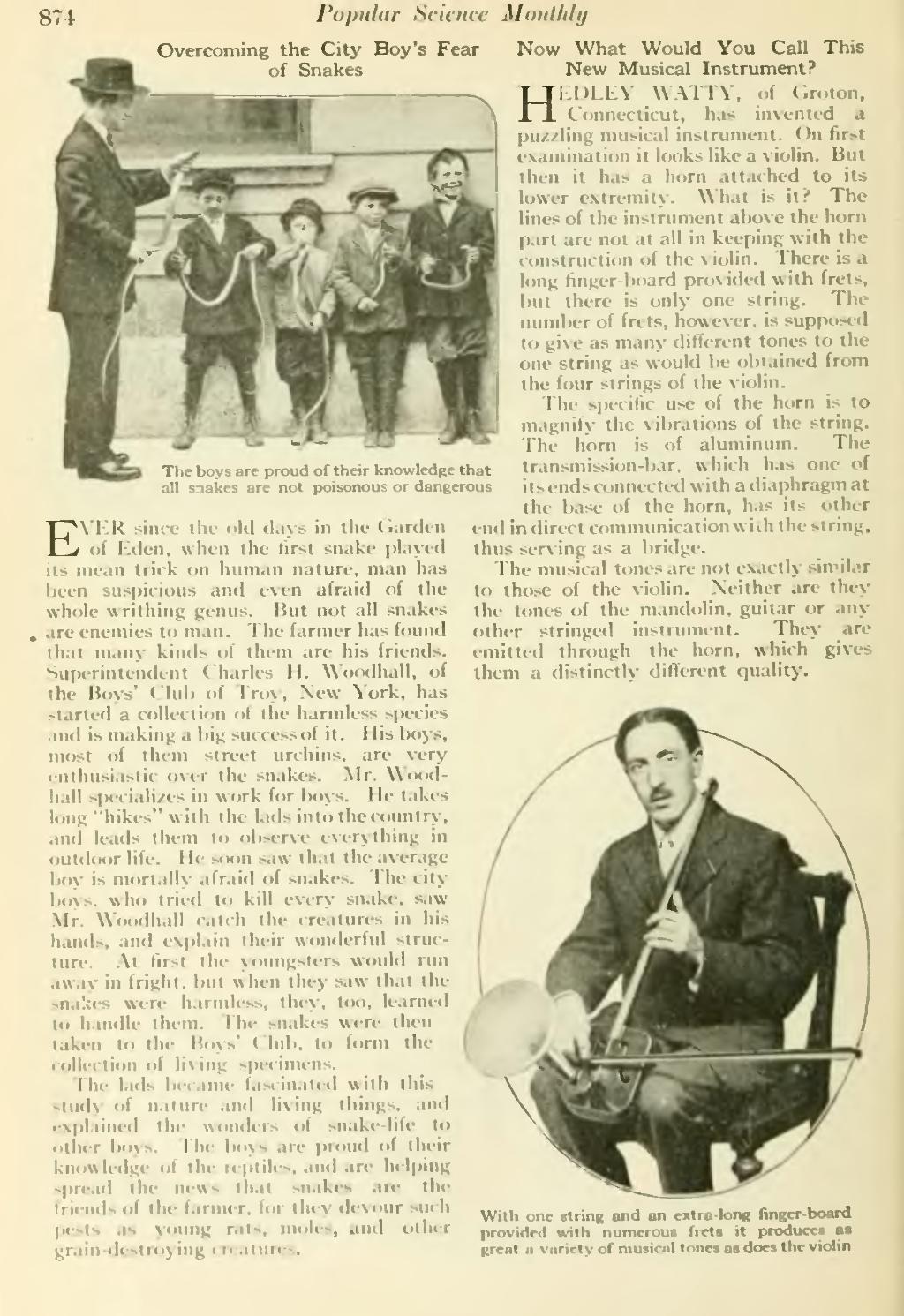874 Popular Science Monlhhj
Overcoming the City Boy's Fear
���H'
��all
��jys are proud of their knowledge that snakes are not poisonous or dangerous
��E\'1-3R since tlic old days in the Garden of Eden, wlien the first snake pla\-ed its mean trick on human nature, man lias been suspicious and even afraid of the whole writhing genus. But not all snakes are enemies to man. The farmer has found that many kinds of them arc his friends. Superintendent Charles H. Woodhall, of the Boys' Club of Tro>-, New York, has started a collection of the harmless species and is making a l)ig success of it. His boys, most of them street urchins, are very enthusiastic over the snakes. Mr. Wood- hall specializes in work for bo^s. He takes long "hikes" with the lads into the country, and leads them to observe everything in outdoor life. 1 le soon saw that the aNerage boy is mortalK' afraid of snakes. The city boys, who tried to kill every snake, saw Mr. Woodhall catch the creatures in his hands, and exi)lain their wonderful struc- ture. .'\t first the youngsters woukl riMi away in fright, but when they saw that the snakes were h.irmless, they, too, learned to handle them. The snakes were then taken to the Boys' Club, to form the collection of li\ ing specimens.
The lads became fascinated with this study of naturi- and li\ing things, and explained the wonders of snake-life to other boys. The boys are proud of their knowledge of the reptiles, and are helping sprea<l the news that snakes are iht- friends of the farmer, for they devour sik h pests as young rats, moles, and otlur grain-destroying creatures.
��Now What Would You Call This New Musical Instrument? IIDLEV WATTY, of Groton, Connecticut, has iinented a pu/./ling musical instrument. On first examination it looks like a \iolin. But then it has a horn attached to its lower extremitv . What is it? The lines of the instrument above the horn part are not at all in keeping with the construction of the violin. There is a long finger-board provided with frets, but there is only one string. The number of frets, however, is supposed to gi\e as many different tones to the one string as would be obtained from the four strings of the \iolin.
The specific use of the horn is to magnify the vibrations of the string. The horn is of aluminum. The transmission-bar, which has one of its ends connected with a diaphragm at the base of the horn, has its other end indirect communication with the string, thus serving as a bridge.
The musical tones are not exactly similar to those of the \iolin. Neither are they the tones of the mandolin, guitar or any other stringed instrument. They are emitted through the horn, which gives them a distinctly different quality.
���Willi one string and »n cxiiu-long finger-board provided with numerous frets it produces as great a variety of musiciil tones as does the violin
�� �
